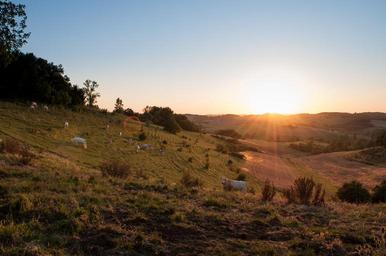Introduction
In a world where identity is often expressed through the lens of social media and personal branding, the concept of faceless self-portraits emerges as a compelling counter-narrative. The Allure of Faceless Self Portraits: Expressing Identity Without a Face invites us to reconsider how we define ourselves beyond our physical features. This article delves into the artistic and psychological dimensions of faceless self-portraits, exploring how they serve as powerful tools for expressing identity without relying on facial recognition.
The Allure of Faceless Self Portraits: Expressing Identity Without a Face
Faceless self-portraits challenge conventional norms surrounding portrait photography. They strip away the recognizable elements that typically define an individual, inviting viewers to engage with the artwork on a deeper level. This unique approach allows artists to focus on emotion, context, and symbolism rather than mere likeness.
Understanding Faceless Self Portraits
Faceless self-portraits, as the name suggests, are images where the subject's face is obscured or omitted entirely. This can be achieved through various techniques such as:
- Using props Creative angles Lighting effects Digital manipulation
By omitting facial features, artists invite viewers to interpret their work based on feelings and experiences rather than preconceived notions about identity.
Why Choose Faceless Self Portraits?
Many artists choose this route for several reasons:
Anonymity: It offers a layer of protection against judgment. Universal Appeal: These portraits can resonate with broader audiences since they lack specific identifiers. Emotional Depth: Viewers may project their feelings onto the art when they cannot rely on specific facial expressions.Exploring Aesthetic Colorful Portrait Photography
Aesthetic colorful portrait photography takes faceless self-portraits to another level by incorporating vivid colors and striking compositions. The interplay between color and abstraction creates visually stunning images that evoke emotions while sparking curiosity https://telegra.ph/Crafting-an-Inviting-Atmosphere-with-Thought-Provoking-Imagery-06-10 about the unseen subject.
Creating Aesthetic Colorful Self-Portraits
To achieve aesthetic colorful portraits, consider these techniques:
Color Schemes: Use contrasting colors to create dynamism. Backgrounds: Experiment with vibrant backdrops that complement your attire or props. Lighting: Natural light can add warmth while artificial lighting can create dramatic shadows.Incorporating Props in Aesthetic Photography
Props play an essential role in faceless self-portraits:
- Masks Hats Flowers Objects representing personal interests
These items not only enhance visual appeal but also offer insight into your personality and passions without revealing your face.
The Evolution of Portrait Photography
Portrait photography has evolved from formal paintings commissioned by royalty to contemporary digital captures shared on social media platforms. Its transition reflects changing societal values regarding identity and representation.
Historical Context of Portrait Photography
Portrait photography began in the mid-19th century when cameras became more accessible. Early photographers focused on capturing subjects’ faces, considering them essential for conveying personality and social status.
Contemporary Shifts in Perspective
With advancements in technology and shifts in cultural discourse around identity, many artists now explore alternative forms of representation, such as faceless self-portraits.

Fine Art Photography vs Traditional Portraiture
Fine art photography emphasizes artistic expression over mere documentation—faceless self-portraits embody this ethos perfectly.
Defining Fine Art Photography
Fine art photography prioritizes creativity, aiming to provoke thought or convey emotions rather than simply capture reality.
Contrasting Approaches: Fine Art Vs Traditional Portraiture
| Aspect | Fine Art Photography | Traditional Portraiture | |----------------------|------------------------------------------|----------------------------------------| | Intent | Artistic expression | Documentation of identity | | Composition | Abstract concepts | Focused on facial features | | Techniques | Mixed media, experimental styles | Standard poses and lighting techniques |
By embracing fine art principles through faceless self-portraiture, photographers tap into a wealth of creative potential.
The Psychology Behind Faceless Self-Portraits
Psychologically speaking, faceless self-portraits allow both artists and viewers to confront complex emotions tied to identity—loneliness, introspection, anxiety—without getting caught up in societal expectations linked to facial recognition.
Exploring Identity Through Art
Art can serve as a means for individuals to explore their identities:
What does it mean to be seen? How do we perceive ourselves versus how others perceive us?Faceless self-portraits provide an avenue for navigating these questions while fostering connection amongst diverse audiences.

The Role of Anonymity in Expression
Anonymity plays a pivotal role in creative expression:
It reduces pressure associated with being judged based on appearance. It encourages vulnerability by allowing individuals to share personal stories without fear of exposure.Techniques for Capturing Faceless Self-Portraits
Capturing compelling faceless self-portaits requires technique—here's how you can effectively create these intriguing images yourself!
1. Experiment with Angles
Explore different perspectives by shooting from above or below—the right angle can add depth while obscuring identifying features.
2. Utilize Shadows
Shadows can become powerful storytelling devices; experiment with light sources that cast unique shapes across your body or surroundings.
3. Play with Reflections
Use mirrors creatively! Capturing reflections allows you to present parts of yourself without showing your full face—think outside traditional boundaries here!
4. Embrace Movement
Capture motion through long exposures or blurred shots; movement adds dynamism while still maintaining anonymity within your subject matter!
Faceless Self Portrait Ideas for Inspiration
If you’re looking for inspiration for your own projects or just want some fresh ideas about how others have approached this genre creatively—look no further! Here are some exciting suggestions worth trying out:
1) Silhouettes against vibrant sunsets
2) Backlit shots highlighting clothing choices
3) Close-ups focusing solely on hands holding meaningful objects
4) Abstract representations using paint splatters over canvas portraits
Each concept provides opportunities for experimentation while ensuring anonymity remains intact throughout one’s artwork!
How To Hang A Large Canvas
Once you’ve created beautiful pieces worth displaying proudly within your home—it’s crucial knowing how best hang them! Here’s our step-by-step guide:
1) Measure out where you'd like it placed before marking spots along wall surface
2) Use appropriate hardware depending upon weight (D-rings recommended!)
3) Ensure even spacing between pieces if multiple canvases are involved
4) Stand back after hanging—to admire placement & adjust if needed!
Following these steps guarantees visual harmony among all artworks showcased throughout living spaces!
Art Photographers Who Specialize In Faceless Self-Portraiture
Several talented photographers have made names for themselves through their exploration into faceless portraiture—here are just some noteworthy mentions worth checking out!
1) Sara K Byrne – Known for ethereal abstractions capturing essence rather than likenesses
2) Julia Pott – Combines whimsical elements alongside strong emotional narratives
3) Juno Calypso – Creates immersive worlds emphasizing solitude via striking visuals
These influential figures remind us there's beauty found outside traditional frameworks around what constitutes ‘portrait’ photography today!
Aesthetic Photo Walls: Creating Your Own Gallery Space
Displaying works inspired by this genre becomes easier once you understand methods behind creating aesthetically pleasing arrangements across walls! Here’s our comprehensive guide outlining effective strategies here:
1) Select cohesive themes connecting each piece together visually (color palette works wonders!)
2) Play around utilizing different frame sizes/shapes enhancing dimensionality within space itself
3) Consider incorporating shelving units showcasing smaller sculptures alongside larger artworks
Implementing these ideas leads towards forming stunning galleries illustrating journeys taken via artistry shared amongst friends/family alike!
Why Do Many Contemporary Printmakers Prefer Linocut To Woodblock Printing?
This question arises frequently when discussing modern printmaking practices—while both methods yield fantastic results…there’s specific reasons why linocut has gained popularity recently ranging from accessibility/affordability compared woodblocks needing special tools/machines allowing wider audience engagement overall!
Linocuts enable artists greater freedom experimenting styles producing high-quality prints quickly making them appealing options among emerging talents today!
Frequently Asked Questions (FAQs)
1). What is the definition of self portrait photography?
Self portrait photography refers broadly capturing oneself artistically via camera lenses typically focusing attention upon individuals’ likenesses/emotions conveyed throughout images produced ultimately resulting unique representations reflecting inner thoughts/feelings experienced personally during creation process itself!
2). How can I come up with more faceless self portrait ideas?
To brainstorm additional concepts try drawing inspiration from daily life experiences interacting environments around you - think about ways using objects/colors representing mood/state mind currently feeling whilst remaining anonymous overall within final composition too!
3). Are there specific techniques used often when creating aesthetic colorful pictures?
Absolutely! Color theory plays huge part understanding harmonious palettes choosing hues/combinations evoke desired emotional responses viewers have upon seeing work produced ultimately leading towards captivating outcomes enhancing overall viewer experience dramatically more rewarding too!
4). What role does lighting play within portrait shoots involving anonymous subjects?
Lighting serves as essential element shaping atmosphere throughout photographs taken impacting mood conveyed significantly thus experimenting various sources/types (natural vs artificial lights), angles will help produce diverse effects enriching work deeply enhancing quality outcomes substantially during shoots undertaken!
5). Why should I consider hanging my large canvas artwork differently compared typical framed photos?
Large canvases require distinct approaches due their weight/size necessitating stronger mounting systems more suitable ensuring longevity display purposes preventing damage occurring over time when hung improperly either falling down risking injuries potentials too - so invest time learning proper methods beforehand matters greatly here overall longevity appreciated greatly later down road too!
